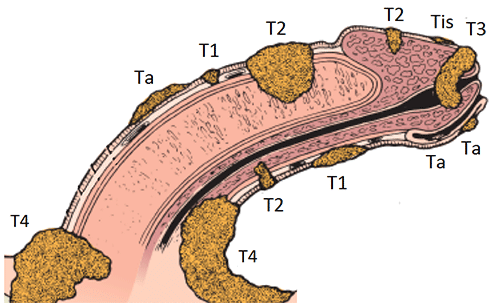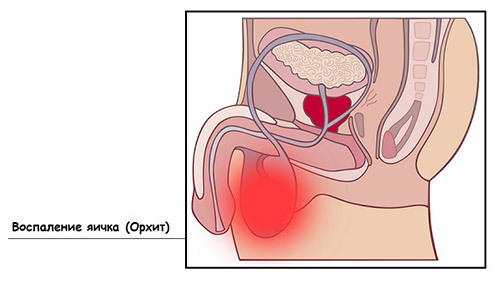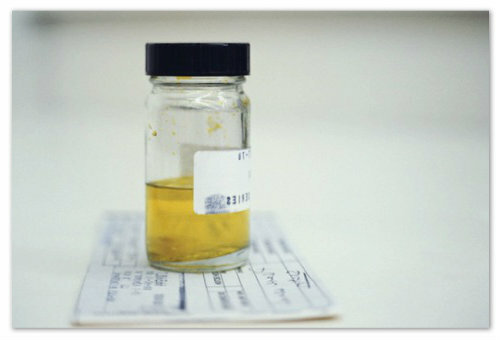Treatment of benign prostatic hyperplasia, depending on the stage
Benign prostatic hyperplasia ( detail), formerly known as BPH, requires a responsible and integrated approach to therapy. The methods that are chosen by a physician largely depend on the stage of the pathological process. A four-stage classification of the pathological process is universally recognized. The doctors have a number of medical and surgical methods. How is hyperplasia treated in different cases? There are 4 steps
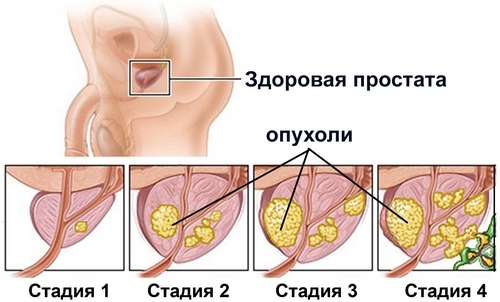
giperplozii benign prostatic
content
- 1 prostate adenoma stage 1
- 2 BPH
- 3 2 step 3 step Prostate Adenoma
- 4 BPH step 4
- 5 O folk treatments
BPH symptoms
1 step. At the first stage, there is no symptomatology or it is very poorly known. However, with the proper share of attention to your own organism, pathological signs can be seen. There are frequent urge to empty the bladder, mild aching pain in the lower abdomen, extending to the anus, penis. Particularly attentive should be men of the older age group( 40+).Hyperplasia rarely infects young people.
At this stage of the disease development, the size of the adenomatous node does not exceed 10-20 mm in diameter. The latent form of the disease lasts for 2-5 years.
Treatment. When it comes to the first stage of benign prostatic hyperplasia, physicians often elect the tactics of follow-up. Treatment as such is not required. In extreme cases, 5 alpha-reductase inhibitors are prescribed. These drugs can stabilize the size of the tumor-like structure. Preference is given to physiotherapy and diet. Indications for surgical intervention as such are not present. The question is decided at the discretion of the patient.
There is a simple complex that allows to normalize the function of the prostate and slow down the growth of the adenoma. You can do it, including at home.
- Lie on your back. The body is as relaxed as possible. Legs are unbent, hands lie along the trunk. On account of "once" both hands raise and pull up. On account of "two" return to the original position.
- The starting position is identical. Legs bend at the knees. On account of the time, with a sliding motion, unbend the lower limbs. Do this without hurry. In the same way, bend the legs back.
- Lying on the back perform the exercise "bike".
- The starting position is the same. It is necessary to squeeze and relax the buttocks rhythmically.
- Feet bend in the knees. Breed your legs and squeeze them in your hips.
- In any position. Strain muscles located in the prostate gland. To understand what the sensations should be, it is recommended to interrupt the process of urination 2-3 times.
Stage 2 prostate adenoma
Symptoms. It is still considered the initial stage of the disease course. The symptomatology manifests itself in sufficient measure, becomes noticeable to the patient. Do not reveal pathology difficult.
Treatment. At this stage, a conservative complex treatment with the following drugs is shown:
- Alpha-blockers. They help to relax the smooth muscles of the urinary tract and normal evacuation of urine. You can name the following names: Omnik, Kardura, Kornam, etc.
- Inhibitors 5 alpha-reductase( see here).Stabilize the size of the tumor, not allowing the process to develop further. First and foremost, it is Finasteride and its analogs.
- Preparations of plant origin. Most of them have an antispasmodic effect. Specific names are selected by the doctor.
At this stage, the tumor size does not exceed 30-40 mm. Strictly contraindicated taking diuretic drugs.
Despite the fact that the tactics of the therapy of the second stage presuppose conservative methods, in some cases the early stages are already very difficult. For such clinical situations, urologists developed informal criteria that determine the need for the operation:
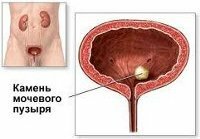
One of the manifestations of prostate adenoma in the second stage may be concrements( stones) in the bladder
- Acute urinary retention.
- Formation of calculi in the bladder.
- The decrease in the intensity of the urine current is below 10 ml / s.
- Hematuria.
- Significant volume of residual urine( over 80-100 ml).
In the absence of contraindications, it is allowed to use minimally invasive instrumentation treatment methods( which are not considered to be operational in nature): vaporization, cryodestruction, electrocoagulation, etc.
Stage 3 prostate adenoma
Symptoms. This is already the started stage of pathology formation. Observed severe symptoms, including:
- incomplete emptying of the bladder;
- pollakiuria;
- intense pain;
- frequent nocturnal awakenings.
The dimensions of the tumor vary from 55 to 80 mm. These are large formations that disrupt the normal functioning of the entire excretory system.
Treatment. Therapy in this case is combined. Sparing surgical intervention with transurethral access is shown( surgical instruments are inserted through the urethra for access to the prostate gland).At the end of the operation, the tissues are necessarily sent to the laboratory for histological and morphological examination. If the patient first came to the doctor at this stage of prostate enlargement and the successor, there are suspicions about the nature of the current process, an open cavity operation is indicated( for example, if there are grounds for assuming a malignant process).Before the appointment of treatment requires a thorough diagnosis.
Read more: Operations with prostate adenoma: types, advantages and disadvantages
The post-operation period shows the intake of specialized drugs. Transurethral resection is good because it does not leave postoperative scars and suggests a short period of rehabilitation period. After 1-2 weeks after the intervention, it is necessary to begin to practice therapeutic gymnastics. For the entire period of therapy, a sparing regimen of physical activity and a vitaminized diet with a minimum content of animal fats are recommended.
Prostate adenoma Stage 4
The most severe form of the disease, fraught with the development of severe complications. If you do not provide medical assistance in a timely manner with a high probability of a fatal outcome. Alternatives to surgical intervention in this case simply do not exist. Urgently, the patient is hospitalized in a urological hospital and is operated.
Significant dimensions of the adenomatous node( and in the case of the fourth stage are huge tumors exceeding 80 mm in diameter) do not allow transurethral interference. An open adenomectomy is shown. This is a highly traumatic and fraught with complications surgery, which, however, allows to solve the problem once and for all. Access is through the front wall of the abdominal cavity and the incision in the bladder.
The postoperative period lasts about a month. A significant part of the patient's time is spent in the hospital. Very likely consequences in the form of intensive urethral bleeding, obstruction of the urethra by blood clots, infection, stenosis of the urethral canal. Nevertheless, there are no other effective methods of treatment yet.
About folk methods of treatment
The psychology of the average patient-immigrant from the CIS countries is arranged in such a way that in the event of health problems a person turns not to a doctor but to the Internet. This is an extremely dangerous practice. Sources reinterpreted in the network in one voice are recommended to be treated by folk methods.
The sexual system, especially the prostate gland is a fragile structure. Many recipes that can be found on websites are, at best, useless. It's a waste of time. Others are frankly dangerous. Thus, attempts to take diuretics are highly likely to lead to acute urinary retention and rupture of the bladder, which is fraught with a fatal outcome. People's remedies are categorically prohibited.
Benign prostatic hyperplasia is treated in a complex manner. An exceptionally operative technique is shown only in the advanced stages of pathology. It is important to bear in mind: there can be no question of any self-medication. In the most favorable case, this will lead to the hospital. In the worst - you can say goodbye to life. Therapy should be conducted only under the supervision of a urologist or urologist andrologist.
Recommended for viewing:

